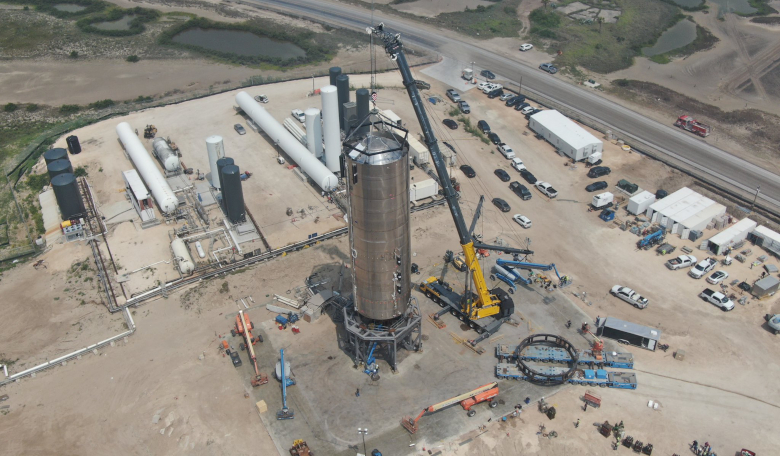Elon Musk’s Starship SN4, which the entrepreneur hopes will one day lead to a successful mission to Mars, became SpaceX’s first full-scale Starship prototype to pass a cryogenic proof test at the company’s launch site in Boca Chica, Texas on Sunday.
The cryogenic proof involves filling some or all of the Starship SN4 prototype with ultra-cold liquid nitrogen (LN2) to verify that its tanks can withstand flight pressures therefore proving the vehicle is flight-worthy.
Although the finished design will use sub-cooled liquid methane and liquid oxygen (CH4/LOX) as a propellant, LN2 is chemically neutral and therefore won’t catch fire or cause total devastation should the test not have gone according to plan.
The SN4 (for Serial No. 4) follows SpaceX’s other first full-scale Starship prototypes, the Mk1, the SN1, and also the SN3 – all of which have previously failed the cryogenic proof test within the last 5 months. The latter, SN3, occurred just a few weeks ago and was the result of an issue with the test itself as opposed to any material problems with the Starship build, said Musk.
SpaceX's Starship SN2 has been the only prototype to pass cryogenic proof testing, however, it was a stripped down version of the huge 9-metre diameter (30 ft), 50-metre stainless steel hull rather than a full-scale vehicle.
With the successful cryogenic test now in the bag, SpaceX teams will now work towards a static fire, and then potentially a small hop.
According to tweets by Musk, the CEO said a static fire with a Raptor (engine) would occur hopefully later this week, while Starship could be “physically” ready for a hop test in a “few weeks”, though “approvals [from the FAA] may take longer.”
Musk has said repeatedly that his space exploration firm will continue testing new iterations of Starship with an aim to launch a 20 kilometer (12-mile) high hop sometime this year, though the hop test planned for a few weeks is likely to be around 150 metres (500 feet).
When complete, Starship and its mammoth rocket booster the Super Heavy (collectively referred to as Starship), will house 43 Raptor engines between them, making it the world's most powerful launch vehicle ever developed, say SpaceX.
Its purpose is to serve as a large, long-duration spacecraft capable of carrying passengers or cargo to Earth orbit and between destinations on Earth, says Musk, but ultimately, Starship is being developed for an expedition to Mars.
First though, Starship has been booked by billionaire Yusaku Maezawa, an art curator who founded Japan’s largest online clothing retailer, to carry himself and eight artists around the moon; a trip that is now being targeted for no earlier than 2023.
In the meantime, Musk is already thinking about Starships SN5 and SN6 to facilitate his end game. Both prototypes are expected to get nosecones, something that previous versions have been missing during testing and both might end up with flaps installed, says Musk.
"Definitely header tanks & nosecone on SN5, hopefully flaps too. Definitely flaps on SN6,” Musk wrote on Twitter (April 21).
The vehicles large fore and aft flaps (canards) are a slightly modified version of those unveiled on the Starship Mk1 vehicle back in November 2019.











